The Balanced Scorecard is a management system that enables organizations to clarify their vision and strategy and translate them into action developed by Kaplan and Norton in 1992. It provides an organization with a feedback mechanism of both the internal business processes and external outcomes, which allows for continuous improvement of strategic performance and results.
The Balanced Scorecard is a management system that maps an organization’s strategic objectives into performance metrics in four perspectives:
- Financial – i.e. operating income, return on capital employed, and economic value-added.
- Internal processes – i.e. cost, throughput, and quality. These are for business processes such as procurement, production, and order fulfillment.
- Customers – i.e. customer satisfaction, customer retention, and market share in target segments.
- Learning and growth – i.e. employee satisfaction, employee retention, and skillsets, etc.
These four perspectives are designed to cover the whole of the organization’s activities, both internally and externally, current and future. These perspectives provide relevant feedback as to how well the strategic plan is executing so that adjustments can be made as necessary.
They are not just a collection of independent perspectives. There is a logical connection between them. For Example, learning and growth lead to better business processes, which in turn lead to increased value to the customer, and finally leads to improved financial performance. The Balanced Scorecard framework can be depicted as follows:
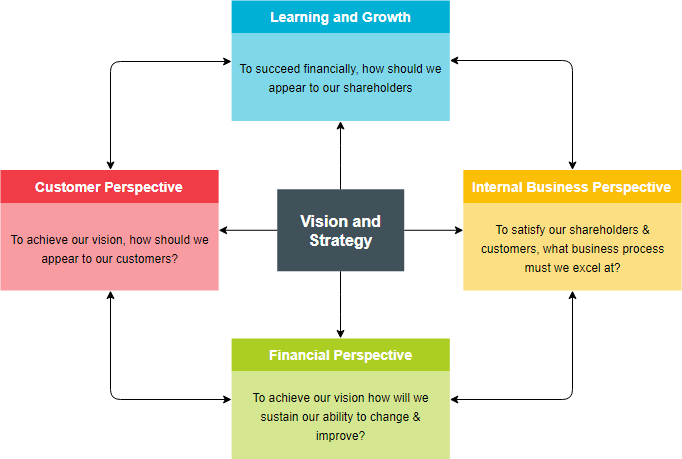
Edit this Balanced Scorecard Example
The Components of Scorecard
Each one of these perspectives contains four subparts consisting of:
- Objectives – what the strategy is to achieve in that perspective
- Measures – how progress for that particular objective will be measured
- Targets – refer to the target value that the company seeks to obtain for each measure
- Initiatives – what will be done to facilitate the reaching of the target
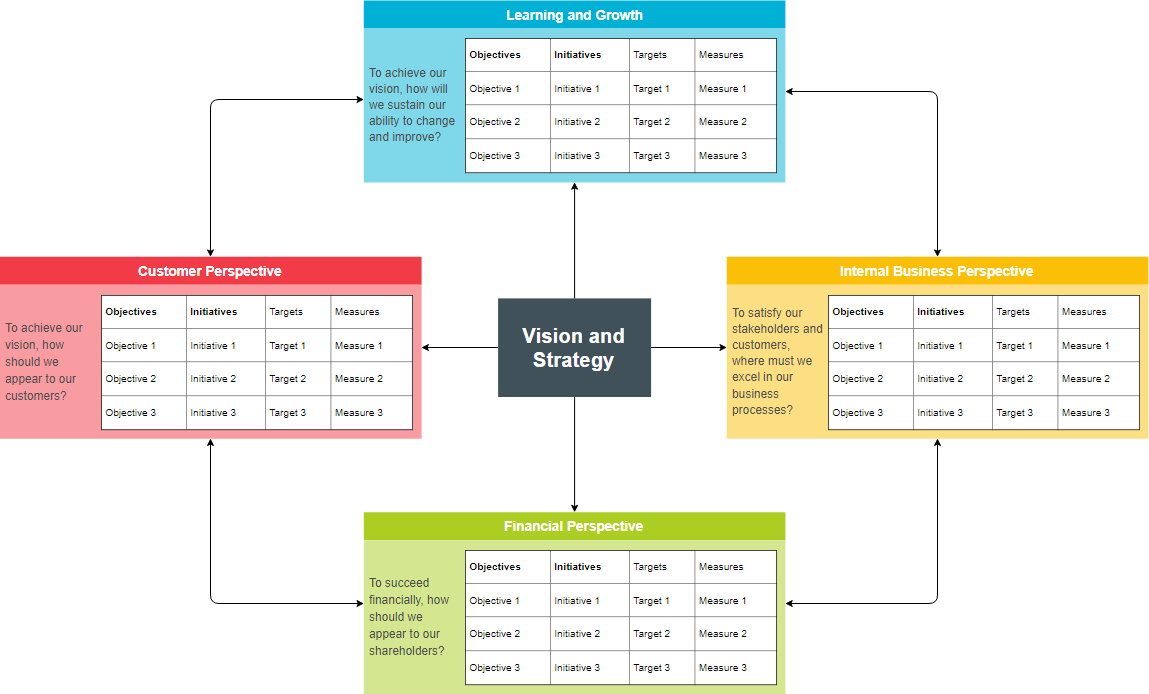
Edit this Balanced Scorecard Template
Note That:
The term “scorecard” signifies quantified performance measures and “balanced” signifies the system is balanced between:
- Short-term and long term objectives
- Financial and non-financial measures
- Lagging and leading indicators
- Internal and external performance perspectives
Balanced Scorecard Example – Smith National Bank
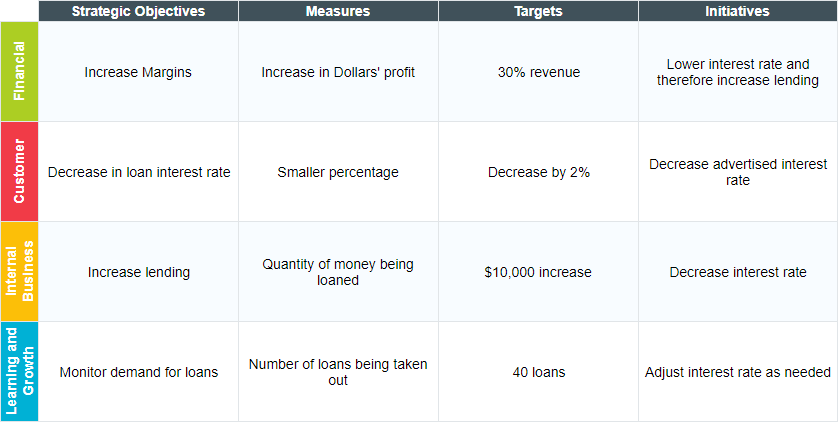
Edit this Balanced Scorecard Example
Balanced Scorecard Example – GE Lighting Business Group
The example shows how the scorecard at GE Lighting Business Group at the corporate level is then cascaded to division level, and further to plant level and employee level.
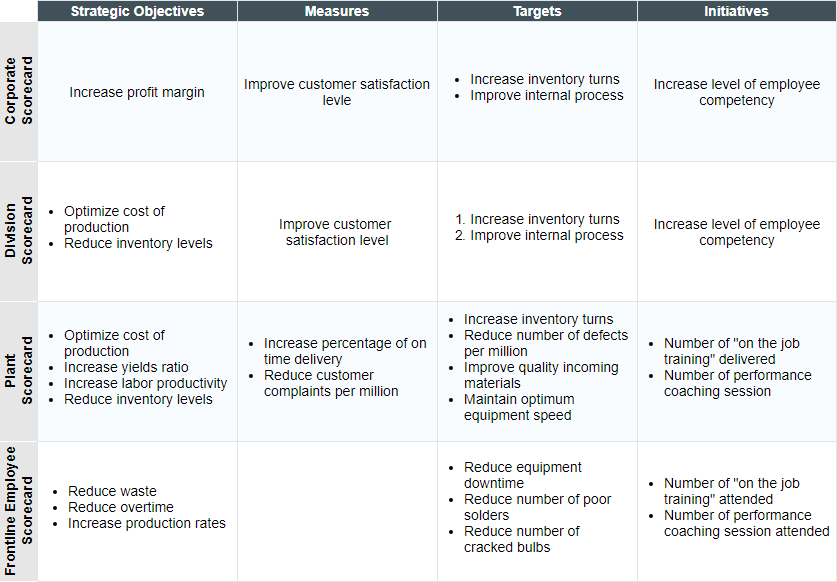
Edit this Balanced Scorecard Example
Balanced Scorecard vs Strategy Map
Recall that, a balanced scorecard is broken down into four Perspectives. Each perspective has several Strategic Objectives. A chart showing the relationships between strategic objectives in the balanced scorecard is called a Strategy Map which was originally developed by Kaplan and Norton to support the balanced scorecard. It provides a roadmap giving direction and linking the operation performance indicators to the strategy of the company.
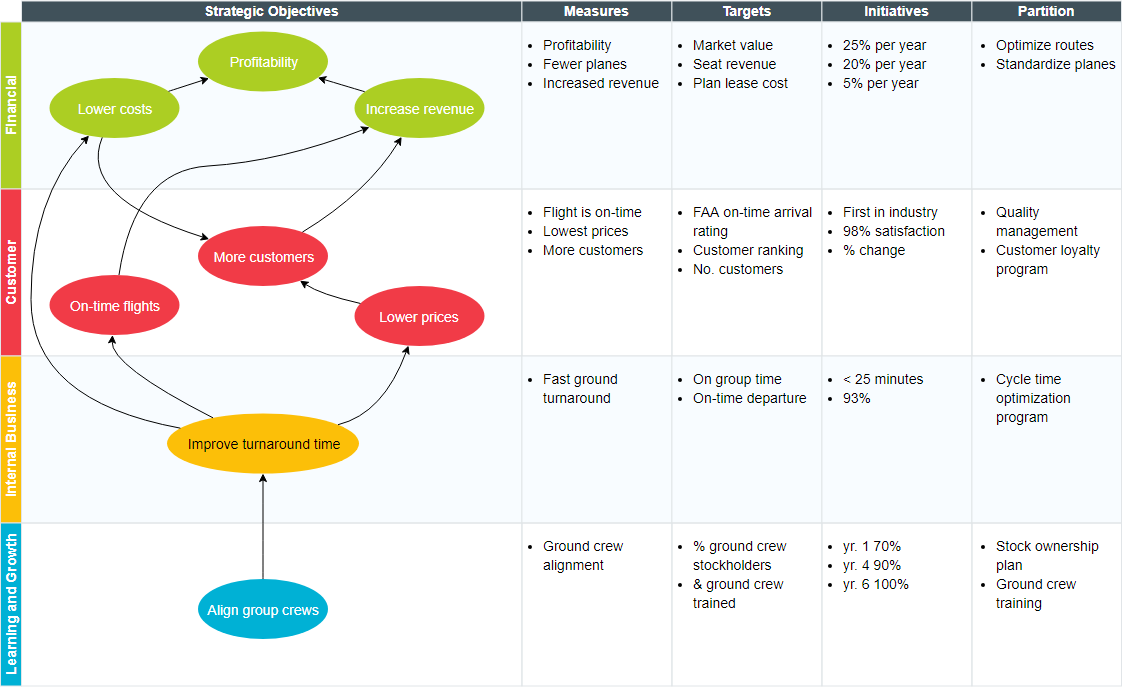
Edit this Balanced Scorecard Example